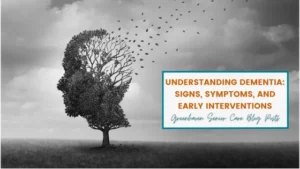
AI Companions for Seniors: A Thoughtful Guide for Families and Caregivers
AI companions for seniors explained by Greehaven Senior Care: what they are, how they help, and what families should consider before choosing one.

Did you know May was the National Stroke Month? When it comes to stroke every second counts. Acting fast can literally be the difference between life and death.

Strokes are more common than you think. Every 40 seconds, someone in this country experiences one, and one out of every 20 deaths in the United States is the result of a stroke.
When someone has a stroke, nearly 2 million brain cells die every minute the stroke remains untreated.
Having rapid access to medical treatment can often make the difference between living and dying of a stroke, and between fully recovering and having some disability as a result of the stroke.
A stroke, sometimes called a brain attack, happens in one of two ways:
You can greatly reduce your risk for stroke by making lifestyle changes to help control your blood pressure and cholesterol levels and, in some cases, by taking medication.
CDC recommends an easy way to remember the most common signs of stroke and how to respond by using an acronym: F.A.S.T
F = Face drooping: Ask the person to smile. Does one side droop?
A = Arm weakness: Ask the person to raise both arms. Does one arm drift downward?
S = Speech difficulty: Ask the person to repeat a simple sentence. Are the words slurred?
T = Time to call 9-1-1: If the person shows any of these signs, call 9-1-1 immediately. Stroke treatment can begin in the ambulance.
If you think that you or someone you know is having a stroke, call 9-1-1 immediately. A stroke is a medical emergency, and stroke treatment and outcomes depend on how fast you get to the hospital and the type of stroke the person had.
When you are transported by ambulance, first responders may be able to start your treatment right away and can alert the hospital that a stroke patient is on the way. This notification gives the hospital’s medical team time to prepare equipment and medicines you may need.
Your doctor will perform several tests that will help them diagnose a stroke. These tests can include stroke imaging, MRI (magnetic resonance imaging), CT Scans (computed tomography), blood flow tests, or tests of the brain’s electrical activity.
First of all, if you think you may have a stroke, head immediately to an emergency room, call an ambulance, or have someone else call an ambulance. Treatment for a stroke may include emergency care, prevention of another stroke, rehabilitation if a disability occurred that will help you re-learn the skills you may have lost because of the stroke or all of the above. Additionally, your doctor most likely will also recommend lifestyle changes to help you lower the risk from future strokes. Talk with your doctor about the best ways to reduce your chances to have a stroke and take any prescription medicine they will give you to help you with this.
Call (206) 801-7555 Or Contact Us for Room Availability, Pricing, or if you are a family member or friend of our residents.

AI companions for seniors explained by Greehaven Senior Care: what they are, how they help, and what families should consider before choosing one.

Call (206) 801-7555 Or Contact Us for Room Availability, Pricing, or if you are a family member or friend of our residents. Dementia is a

Dementia is a challenging condition for both individuals and their families. Learn about dementia, its impact, and why Greenhaven Senior Care in Edmonds is the best choice for compassionate and personalized dementia care

Discover the best senior-friendly activities in Edmonds, WA! From scenic waterfront strolls and cultural events to top dining spots like Arnies and Epulo Bistro, explore engaging ways to stay active and social. Whether you enjoy art classes, farmers markets, or a relaxing ferry ride, Edmonds offers something for everyone. Read on for our top recommendations!
Video: Recognize the Signs and Symptoms of Stroke
CDC Shareable Stroke Graphics